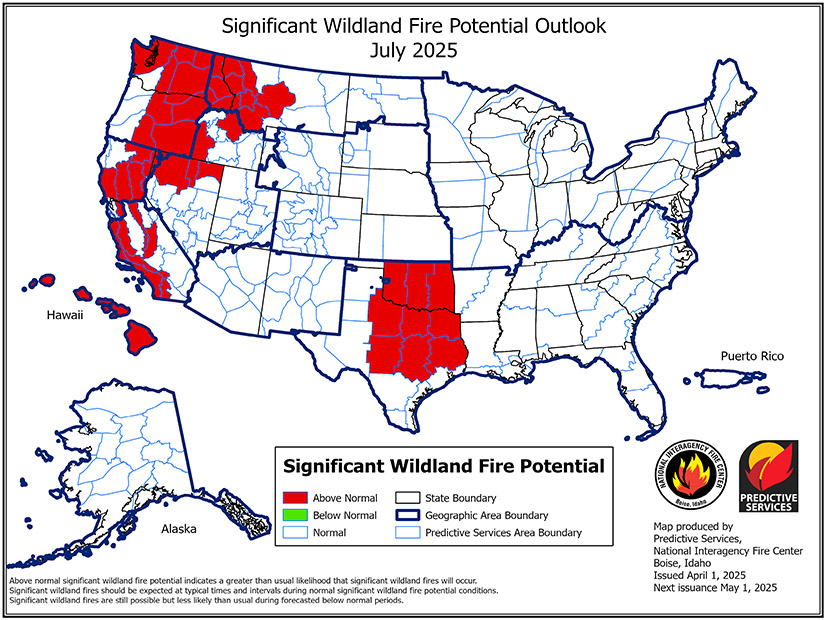Sudden trips offline by data centers in Virginia and cryptominers in ERCOT present new reliability challenges that must be managed, NERC Chief Engineer Mark Lauby told FERC at its monthly open meeting April 17.
The grid in Loudoun County, Va., home to the largest concentration of data centers in the world, was experiencing some voltage sensitivities last summer, Lauby testified.
“In July 2024 we saw about a 1,500-MW drop as a result of some system conditions — in this case, switching after a fault on the system,” Lauby said. “And within 50 seconds, three of those voltage excursions occurred, and the load is monitoring that, and when it sees that happen, it comes offline because it wants to protect its cooling load.”
NERC released a report on the incident in January that details the grid conditions before and after the data center load went offline. (See NERC Report Highlights Data Center Load Loss Issues.)
A similar event happened in Loudoun and neighboring Fairfax County, where 1,800 MW of load suddenly dropped off the system. Lauby said while that still is being investigated, he suspects it will be similar to the July 2024 incident.
Texas has seen more frequent but smaller events as grid conditions have caused cryptocurrency mining facilities to trip offline 25 times between November 2023 and this January, leading to 100 to 400 MW of losses in each incident.
“Historically, if we lose generators, it can trip off the grid,” FERC Chair Mark Christie said during the meeting. “Now we’ve got another issue, which is if large load users simultaneously go off together, it affects the frequency and potentially trips off the whole system.”
The grid can be engineered to avoid those cascading outages across multiple data centers to avoid a situation where the grid’s largest single contingency comes from demand (as opposed to a large power plant or transmission line), Lauby said.
“That comes down to engineering, modeling and continuing to work with the industry — in this case, the large load industry and the power industry — to see how we manage that interconnection,” he added.
NERC is considering rule changes to deal with the newfound risk, which is going to be exacerbated as individual data centers’ load grows to the size of major cities. The grid has dealt with large industrial facilities at 100 to 200 MW for decades, but some of the proposals for large data centers run to thousands of megawatts, which compares to the total loads of San Francisco or Washington, D.C., in a single place, Lauby told FERC.
“We need to, obviously, make sure that’s managed well, and the engineering is done to ensure that we minimize the chances for things to happen,” he added.
NERC stood up a Large Loads Task Force in 2024 that is expected to issue papers and guidelines to address the risks associated with the issue. The ERO also is working on industry guidance on large loads, incorporating work from the task force.
Part of that analysis is to determine how to register the loads, either by requiring the customers themselves to register with NERC, or if that is not legally feasible, then getting their load-serving entities to do it for them, Lauby said. Then once the facilities are registered, NERC will craft reliability standards so the chances of such incidents are minimized.
“Large numbers actually really scare me; the potential reliability impact of these drops sound pretty severe,” Commissioner Judy Chang said.
Modeling can help NERC secure the grid against uncontrollable outages of data centers; Chang asked what kind of data are needed to effectuate that.
Losing 1,500 MW of load is akin to one and a half large nuclear units tripping offline, but the grid has reserves that can maintain reliability in such cases, Lauby replied. NERC has the authority to get data from the industry under the Federal Power Act.
“For the loads, they’ve just been good enough to work with us,” Lauby said. “And, so, is that going to be good for the long term? Probably not … [it’s] something we need to think about.”
Large loads tripping offline is one part of the reliability equation when it comes to data centers, with the other key part being meeting their demand with an adequate supply of resources, Lauby said.
“The definition of reliability is adequacy and operation reliability,” he said. “So, we’ve got both problems.”
